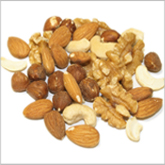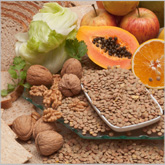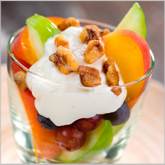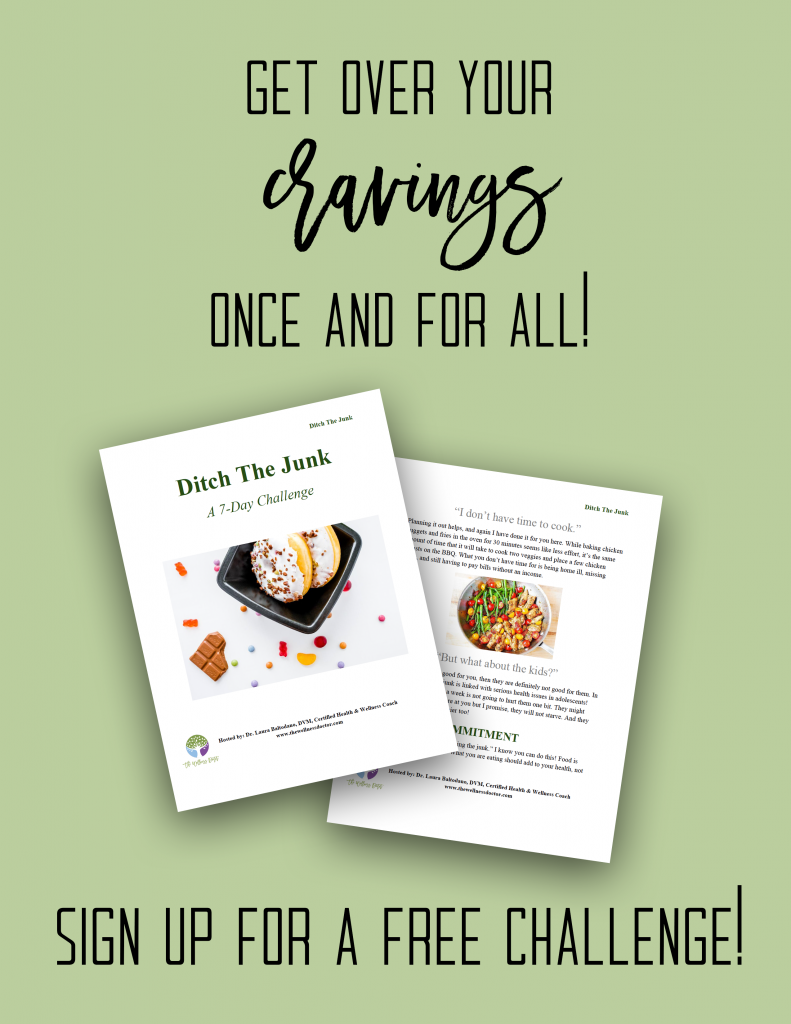8 Week Transition Diet
Transition diets are one of the easiest ways to become a healthier eater.
I’ve been doing them since the ’80s and, in fact, one of the first articles I ever wrote for Beachbody, in January 2001, was a 6-week transition plan. They’re not only great for first-time dieters but are also great for any time you feel like cleaning out your system after a period of slacking off. That’s why I do a variation of this plan almost every year. Here’s my latest creation.
It’s often said that no one diet works for every individual. While this is true, you may have noticed that all Beachbody eating plans target a similar goal: Eat more natural, whole foods and less junk. That’s because there are no secrets to healthy eating. There are strategies that can lead to various performance benefits, but 99% of the goal of eating healthy is to minimize junk and get your diet to consist of real food (you know, the stuff nature makes). With this in mind, our Beachbody nutrition guides use various strategies, all designed to lead you to the same place.
While those nutrition guides tend to be detailed, the 8-Week Transition Diet is for those of you who want simple. Outside of a small list of what you can’t eat, you’re free to chow down on anything. How hard can that be? You should also find that by making your transition gradually, the road to healthy eating is pretty easy.
Week 1
No junk. Eliminate junk food from your diet. That’s it, just junk. Other than this, you can eat whatever and whenever you like. The definition of junk is obvious stuff, like potato chips, candy, ice cream, cake, etc. You may be stricter if you’d like, but for Week 1, don’t be too hard on yourself. Just stay out of the 7-Eleven®. For many of you, this step alone will reap huge benefits.
Cheat Days: 2. Since no one’s perfect, you get two days to cheat. That’s right, two days where you can eat anything you want! A trick on cheat days is to listen to your body. At first, it’ll probably tell you it wants whatever you’ve been denying it. However, over time, it’ll start to crave nutrients you’re deficient in. Learn to read your body’s subtle signs. If you’re craving ice cream, you may be short on essential fatty acids. If you crave a hamburger, your diet may lack protein. By listening to your body and learning what it really needs in this way, you can make better food substitutions. It’s a way of getting in tune with yourself that will benefit you for your entire lifetime.
Weekly focus: Water. Not swimming in it, though that’s good, too, but staying hydrated with it. “They” say you should drink at least 6 to 8 glasses of water per day, but I say you should drink more. Shoot for a gallon (though don’t worry if you fall short). Yeah, that probably seems crazy but almost all of us walk around dehydrated for most of our lives, which not only hurts the way  we function but also makes us hungry when we’re actually thirsty. A glass of water when you feel hunger pangs both staves them off and helps you fill up faster when you do eat. As for other drinks, juices and sugary sodas also
we function but also makes us hungry when we’re actually thirsty. A glass of water when you feel hunger pangs both staves them off and helps you fill up faster when you do eat. As for other drinks, juices and sugary sodas also
(obviously) fall into the junk category. And alcohol should be kept to a minimum. We tend to forget (purposely or not) that alcohol has calories. A lot of them: 7 calories per gram. Mixers can be even worse—not only can they add calories, but these sugary calories influence the way alcohol reacts with your body. When you do drink, try and follow these guidelines.
Week 2
Each week’s rules are cumulative, so the “no junk” rule from Week 1 will apply until the end, as will each subsequent week’s rule. Remember that this is a process. Treat it as though you’re in school and the subject is your own body.
Eat small, eat often. Eat every couple of hours while you’re awake and try not to eat anything for about three hours before you go to sleep. Following these rules will keep your blood sugar levels more static and your energy level will stay consistent. Try to keep each snack or meal balanced. Something like a 30% protein, 40% carbohydrate, and 30% fat ratio, though you don’t need to worry too much about it. Just realize that you need a bit from each macronutrient group. Eat based on what you’ll be doing for the next few hours (if you’re working out, eat a little more; sitting at a desk, eat a little less). The three-hours-before-bed rule is important, especially for fats and carbohydrates. By allowing time for all the carbs you eat to get into your bloodstream, your body will sleep in fat-burning mode, rather than in calorie-storing mode. This is important because undigested carbs in your stomach at night are stored as adipose tissue (fat).
Cheat Days: 2
Weekly focus: Carbs are not the enemy. Your body needs them, just like it needs proteins and fats. The trick is to choose the right carbs. As a society, we eat too much refined sugar. Complex carbs, like whole-grain breads, whole-grain rice, sweet potatoes, and legumes are outstanding foods. Even fruits, which have simple carbohydrates wrapped in fiber, are exceptionally healthy. While you don’t want a diet based on nothing but carbs, making the right carb choices will maximize your body’s potential. Try to avoid white rice and flours. Read labels, and try to avoid ones that use the word “enriched,” because this means these products have been stripped of their natural nutrients, overprocessed, and then fortified with a few random nutrients.
Week 3
Eat some colorful, low-density food at every meal. These are foods that  take up a lot of space without a lot of calories. Veggies are the most obvious
take up a lot of space without a lot of calories. Veggies are the most obvious
example. You can eat a salad bowl overflowing with lettuce and veggies and you most likely won’t exceed 100 calories. By eating low-density foods like veggies and fruits, you’ll keep your portions under control naturally, because they have very few calories for their size. Conversely, high-density foods, like chocolate and butter, are loaded with calories in even the smallest amounts. So beware of salad dressings and other things you add to salads and veggies. Only add enough for flavor; don’t fill up on them. When it comes to live foods, the richer the colors, the fresher the products tend to be. Try to eat a variety of colors in your diet. This simple-yet-random-feeling act will help ensure that you’re covering all your nutrient bases.
Cheat Days: 1
Weekly focus: Protein at every meal. This becomes even more important as you eat more low-density food, because protein tends to be high-density. Many veggies have a lot of protein, but the quantity you must consume starts to become prohibitive. Try to get some protein—meat, dairy, legumes, nuts, or seeds each time you eat, especially when you’re working out hard, because you need to repair broken-down muscle tissue. Since your body can only utilize a certain amount of protein at once, do your best to eat small amounts often (starting to see a theme?) Reading labels is a simple way to learn how to estimate your protein intake. You’ll notice natural foods don’t have labels but once your diet is comprised mostly of these you’ll no longer need them. More on this later.
Week 4
Cook at home. One of the best ways to control your eating is to prepare all your meals yourself. Eliminate all fast food (which hopefully happened in Week 1) and most other restaurant food. You may still eat food from certain restaurants where you can be sure of the ingredients (most will be savvy enough to make a point of how healthy their food is). As you may have seen in the news, restaurants tend to use alarming quantities of salt, among other things. This single step will often bring your body closer to homeostasis (its desired state of balance). This can be hard for many of us because we now have to plan our meals and prepare ahead of time, but try to treat it like vocational school—you don’t learn a new “job” without a little retraining.
Cheat Days: 1
Weekly focus: Fat is essential. Remember that fat is a vital part of your diet,  not just something that makes you fat. What is not vital is junk fat in processed
not just something that makes you fat. What is not vital is junk fat in processed
foods. Healthy fats come from fish, nuts, seeds, avocados, olives, etc.—natural sources. You need to be careful about that amount of fat you eat because it’s very dense. At 9 calories per gram, it contains more than double the calories of carbs and protein.
Week 5
Reduce starchy carbohydrates. Starches include rice, bread, potatoes, corn, beans, and other legumes. While many of these are in no way bad foods, most of us eat too much of them. The goal here is to cut way down on them, if not totally out, and then add them back in when your body feels like it needs energy. This will teach you the relationship you have with carbs. They are vital for energy but eating too many of them leaves us lethargic (and eventually fat). Once you figure this out, your entire relationship with food will change.
Cheat Days: 1
Weekly focus: Sugar is only beneficial after a hard workout or during a long one. Your body doesn’t need processed sugar. But if you really enjoy it and can’t avoid letting some sneak into your daily diet, the one-hour period after you exercise is the best time to indulge. During this window, your blood sugar is low, because you’ve used it up to finish your workout (assuming you pushed yourself), and eating sugar during this time will help you recover faster because it speeds into your system and initiates the recovery process. Adding a little protein, but not too much, will enhance your recovery even further.
Week 6
If man makes it, don’t eat it. This is likely to be the hardest week of your  diet. You want to eat onlywhole foods and eliminate all processed foods, even good ones, for the week. This includes breads, most salad dressings, all cereal, luncheon meats, cheese, dried fruits, anything with preservatives, and alcoholic beverages. What you can eat are whole foods such as fruit, raw or steamed vegetables, meat (sans any type of sauce), natural whole-grain rice, poached eggs, etc. Since your eating habits have been slowly changing, this shouldn’t be that big a shock to your system, but it will still likely be hard. Try and get creative. There are now many raw and whole food “cook” books that can help keep you entertained.
diet. You want to eat onlywhole foods and eliminate all processed foods, even good ones, for the week. This includes breads, most salad dressings, all cereal, luncheon meats, cheese, dried fruits, anything with preservatives, and alcoholic beverages. What you can eat are whole foods such as fruit, raw or steamed vegetables, meat (sans any type of sauce), natural whole-grain rice, poached eggs, etc. Since your eating habits have been slowly changing, this shouldn’t be that big a shock to your system, but it will still likely be hard. Try and get creative. There are now many raw and whole food “cook” books that can help keep you entertained.
Cheat Days: 1
The “cheat day” mentality is a good one. Decadent desserts, a night at the buffet, drinking with friends, etc., can be good for you as long as they are rewards and not habits. Studies proving this have been steadily appearing for about as long as we’ve been studying things. All work and no play does, indeed, make Jack a dull boy.
Weekly focus: Nuts and seeds make great snacks. A handful of raw almonds or cashews is a quick and easy snack that goes a long way. Don’t be put off by the high fat count of nuts, because this means it takes fewer of them to satiate you. Nuts and seeds are loaded with important phytonutrients, as well as good fats, proteins, and fiber.
Week 7
Be yourself. No rules—just try and eat as healthily as you can and do it by feel. Trusting yourself might seem like a lot of responsibility, but by now you’ll be up to it. Learning to eat by feeling what your body needs is an important step in your transformation. Consider the way you’ve been eating over the last six weeks, but don’t worry about what you should and shouldn’t do. Just fuel yourself. The point is to take a mental break. Relax and allow yourself to eat in a way that feels normal. You may be surprised to find yourself craving something healthy instead of a candy bar or soda. You’ll be better at listening to your body because it’ll tell you what it needs to eat, as opposed to what you’re used to eating. Your body should feel somewhat transformed.
“Reward for a Life Well Lived” Days: 1
Weekly focus: If you’re so hungry at night that you can’t sleep, try a protein shake. A recent study confirmed what’s been a focus of this diet for two decades; that protein before bed can raise amino acid activity for a full night of rest.
Week 8
Eat a perfect diet. Let’s get after it. No one is better able to tell you what you  should eat than you. Our bodies are all different, and the key to your own perfect diet is learning about how your body reacts to different foods under different circumstances. Your journey over the last seven weeks should have brought you to a new understanding of how food affects your body, both for good and for bad. The time has come to test it. See how well you can eat for a week. In fact, see how well you can eat for the rest of your life. Live and enjoy.
should eat than you. Our bodies are all different, and the key to your own perfect diet is learning about how your body reacts to different foods under different circumstances. Your journey over the last seven weeks should have brought you to a new understanding of how food affects your body, both for good and for bad. The time has come to test it. See how well you can eat for a week. In fact, see how well you can eat for the rest of your life. Live and enjoy.
Reward Days: 1, of course!
Weekly Focus: Don’t bonk. Bonking is a state when your body runs out of blood sugar and glycogen for energy. If you feel like your workouts are going backward instead of forward, this is a likely culprit. Use your energy level as your gauge. As soon as it starts to drop, start adding carbs back into your diet until you feel energized all day long. When you feel energized during your workouts and the rest of the day, you’ll know you’ve found the right balance between carbs and other nutrients. Also, remember that as your body puts on more muscle, you will need to eat more. Muscle weighs much more than fat, so as you gain muscle and lose fat, your body shrinks without losing weight. You will also require more calories in order to maintain your muscle. So, when you’re working out hard, don’t be afraid to eat more carbs than you do otherwise.




